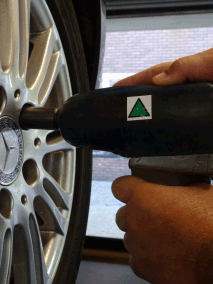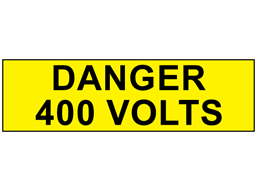Recently, and interesting story published by the Wall Street Journal came to our attention, which discussed the prospect of adding safety warnings to mobile phones. For the vast majority of us, these devices are an essential item that we use and carry with us every day, which makes it rather worrying to think that we may be unknowingly putting ourselves at risk without being provided with proper instructions.
Just recently, MP's voted for a law which states that all cigarettes in England should be sold in standardised packaging with health warnings; a proposal that easily won an overwhelming majority. This of course, seems like common sense to most of us, as we are well aware of the serious health risks posed by smoking. It would, however, be careless to forget that this was once a normal practice amongst former generations, who were not as well-educated on the risks of smoking as we are today. In past eras, it would have been as normal to see someone holding a cigarette in a public place, as it now is to see someone scrolling through their smart phone, which could be an unsettling thought if the possible risks attached to phones are proven.
With possible links to cancer and infertility, it's more than fair to say that these devices are not completely without risk, so why is action not being taken? The issue with subject of mobile phone safety, comes from the fact that there is simply not enough information available to properly evaluate the risks, and therefore provide accurate warnings. With so many health scares and warnings dominating the news, it's easy to see why health professionals would be hesitant to make bold statements about the health risks of mobile phones, but this doesn't distract from the fact that we should have a right to make an informed decision about our chosen lifestyle.
We know the health risk of consuming certain foods or being exposed to certain substances, so doesn't it also stand to reason that we should be properly advised on a device that many of use on a frequent basis? While the risks themselves may not be clear, it is clear that there are risks involved with exposure to radio-frequency; a possible side-effect that shouldn't be ignored by technology companies, or consumers. Whatever your opinion about the severity of these risks may be, it's clear that action must be taken by all involved to ensure that an entire generation is not living in ignorance.
What are your opinions about this story? Let us know via our social media channels:
Twitter Facebook Linked In

We have all heard our fair share of silly Health and Safety excuses, but this health and safety ban is one of the more ridiculous stories we have come across.
The University of East Anglia announced that they will not be offering a Mortarboard throwing photo opportunity at this year’s graduation celebration following a string of flying Mortarboard related injuries they have experienced over the years.
It is understandable why they would want to be cautious about offering the photo op to newly graduated students, especially when last year one of their students ended up in A&E after a receiving a serious injury from a Mortarboard throw, and it is good that they have taken steps to make the traditional celebration safer, however imposing an outright ban on the activity and getting the students to pose as if they are throwing the headwear for it to be photoshopped in later may not be the correct way to handle the situation.
This yet another example of Health and Safety Going mad. Yes this is certainly a way in which a mortarboard accident can be avoided, but it certainly does seem like the university is damping the graduate’s celebrations.
The HSE have condemned this this ban saying that “the chance of being injured by a flying mortarboard is incredibly small and its is over the top to impose and outright ban. We usually find that the concern is actually about the hats being returned in good condition”
It makes sense that the companies are concerned about the condition that their gowns and mortarboards are returned in is understandable, and if this was the case, why don’t they just come forward in saying so – instead of hiding behind health and safety?
In conclusion, these silly health and safety myths gives health and safety a bad rep, the more companies hide behind silly health and safety excuses, the more people are going to ignore the serious regulations and end up causing a serious accident.
We believe that more work needs to be done to help discourage companies from hiding behind silly health and safety excuses. For example, instead of banning mortarboard throwing they could cordon an area off where the throwing will take place, and perhaps get the students to throw the hats slightly forward so they land on a soft mat instead of directly up in the air? This solution, to us at least, seems like the better idea, as the condition of the headgear is not compromised while the students are still able to take part in a university tradition.
For more Health and Safety news, don’t forget to follow us on Twitter and Facebook!
Many powered tools, equipment or machinery, used in the workplace, can cause injury from vibration, particularly if used for extended periods of time. These injuries can include hand and arm vibration syndrome (HAVS), vibration white finger (VWF) and whole body vibration excavators, dumpers, tractors etc.).
These are non-reversible injuries to blood vessels, muscles, nerves and joints in the hand and arm, and can result in pain and cold sensations, numbness, tingling and loss of sensation, loss of light touch, loss of grip strength or dexterity, blanching or whitening of fingers when exposed to cold, and bone cysts in fingers and wrists.

Sectors using such power tools are concentrated in construction, manufacturing, engineering, motor vehicle repair, mining and quarrying, agriculture, fisheries and in utilities. Hand held tools (such as grinders, hammer drills, needle guns or band saws), hand guided machinery (e.g. lawnmowers, chain saws, or compactors) or hand feeding to vibrating machinery (i.e. pedestal grinders) each provide vibration risks.
All such equipment should be risk assessed for the rate of vibration and safe period of use as outlined in the Control of Vibration at Work Regulations 2005 and the European Directive 2002/44/EC. Label Source provide a range of equipment labels, tags and signs for marking such powered tools, and for educating users on best practice to avoid vibration injuries. This can include the use of tensioners to support the weight of tools, provision of suitable personal protective equipment (PPE), instruction and training on correct tool use, as well as regular breaks from use and health screening.
For our full product range please click here.
If you're looking to provide simple, directional instructions, our white arrow labels are the perfect choice! Whether it's to indicate the flow of liquid through a pipe, or to demonstrate the correct direction for turning a valve or dial, there are a multitude of ways that our arrow labels can be used in both the workplace and commercial spaces.
Here's the choice of white arrow labels we provide:
Horizontal White Arrow Label
Clockwise White Arrow Label
Anti-Clockwise White Arrow Label
More details about our white arrow labels:
- Available in rolls of 500 labels
- Made with self adhesive vinyl
- Each measures 50mm x 12 mm
To see more pipe and valve marking labels, click here.
For more product information and health and safety news, follow us on Twitter and Facebook!

Electrical related injuries claim thousands of lives every year due to improper safety precautions. Therefore, clearly marking every potential point of contact with high electrical voltage is extremely important. Our high-grade electrical labels are specially designed to highlight potential hazards of high voltage cables, allowing workers to ensure that they are following the correct safety precautions and not endangering themselves or others whilst they are working.
These top quality high voltage signs are constructed from rigid yellow plastic, making them easily identifiable, and above all else weather resistant. We are able to provide signs to alert workers to a range of different voltages, including, 110v, 230v, 240v, 400v, 415v, 440 volts and many more. Click here to view our full range.
We pride ourselves on being able to provide a truly comprehensive range of electrical warning signs to our customers. However, sometimes you may find yourself in a situation where you cannot find a sign that meets your specific requirements. If you do find yourself in this situation, feel free to contact us on 0800 3761 693 or drop us an email on info@labelsource.co.uk